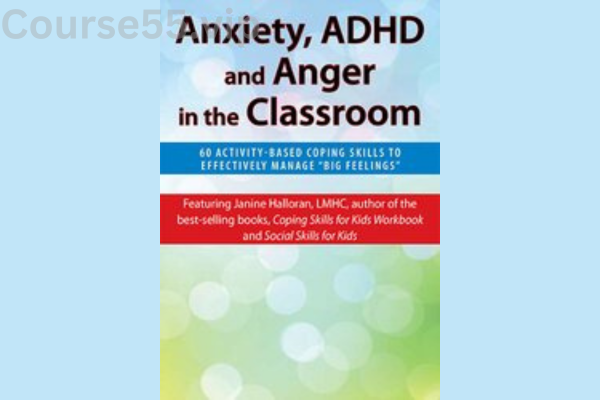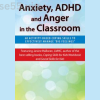-
×
 Understanding the Needs of the Dying: Bringing Hope, Comfort and Love to Life's Final Chapter By David Kessler - PESI
1 × $23.10
Understanding the Needs of the Dying: Bringing Hope, Comfort and Love to Life's Final Chapter By David Kessler - PESI
1 × $23.10 -
×
 Rewire the Anxious Brain: Neuroscience-Informed Treatment of Anxiety, Panic and Worry By Marwa Azab - PESI
1 × $23.10
Rewire the Anxious Brain: Neuroscience-Informed Treatment of Anxiety, Panic and Worry By Marwa Azab - PESI
1 × $23.10 -
×
 Utah Legal and Ethical Issues for Mental Health Clinicians By Susan Lewis - PESI
1 × $23.10
Utah Legal and Ethical Issues for Mental Health Clinicians By Susan Lewis - PESI
1 × $23.10 -
×
 What to Do in the First 90 Days of Your New Job
1 × $23.10
What to Do in the First 90 Days of Your New Job
1 × $23.10 -
×
 The Complete Crowdfunding PR System By Salvador Briggman - CrowdCrux
1 × $23.10
The Complete Crowdfunding PR System By Salvador Briggman - CrowdCrux
1 × $23.10 -
×
 Spartan Renko 2.0 Workshop 2017
1 × $23.10
Spartan Renko 2.0 Workshop 2017
1 × $23.10 -
×
 Ethics & Cultural Competency: 1-Day Intensive Certificate By Frances Patterson - PESI
1 × $23.10
Ethics & Cultural Competency: 1-Day Intensive Certificate By Frances Patterson - PESI
1 × $23.10 -
×
 Legal and Ethical Issues in Behavioral Health in South Carolina By Lois Fenner - PESI
1 × $23.10
Legal and Ethical Issues in Behavioral Health in South Carolina By Lois Fenner - PESI
1 × $23.10 -
×
 Self-Regulation & Executive Functioning in Children and Adolescents: Visual Strategies and Hands-on Techniques to Provide Structure, Predictability, and Routines By Kathy Morris
1 × $23.10
Self-Regulation & Executive Functioning in Children and Adolescents: Visual Strategies and Hands-on Techniques to Provide Structure, Predictability, and Routines By Kathy Morris
1 × $23.10 -
×
 New Rules for Treating Trauma: Integrating Neuroscience for Resilience, Connection and Post-Traumatic Growth By Courtney Armstrong - PESI
1 × $23.10
New Rules for Treating Trauma: Integrating Neuroscience for Resilience, Connection and Post-Traumatic Growth By Courtney Armstrong - PESI
1 × $23.10 -
×
 Outbursts, Oppositional Defiance and Frustration in the Classroom: Self-Regulation Techniques to Reduce the Frequency, Severity and Duration of Problematic Behavior By Laura Ehlert - PESI
1 × $23.10
Outbursts, Oppositional Defiance and Frustration in the Classroom: Self-Regulation Techniques to Reduce the Frequency, Severity and Duration of Problematic Behavior By Laura Ehlert - PESI
1 × $23.10 -
×
 Ultimate Guide Technical Trading
1 × $23.10
Ultimate Guide Technical Trading
1 × $23.10 -
×
 Attachment Focused Therapy: Trauma Related Disorders in Children & Adolescents By Daniel Hughes - PESI
1 × $23.10
Attachment Focused Therapy: Trauma Related Disorders in Children & Adolescents By Daniel Hughes - PESI
1 × $23.10
Anxiety, ADHD and Anger in the Classroom: 60 Activity-Based Coping Skills to Effectively Manage “Big Feelings” By Janine Halloran – PESI
$199.00 Original price was: $199.00.$23.10Current price is: $23.10.
SKU: C55vip.10979bHekYL0T
Category: Download
Tags: 60 Activity-Based Coping Skills to Effectively Manage “Big Feelings”, ADHD and Anger in the Classroom, Anxiety, Janine Halloran - PESI
Anxiety, ADHD and Anger in the Classroom: 60 Activity-Based Coping Skills to Effectively Manage “Big Feelings” – Digital Download!

Anxiety, ADHD and Anger in the Classroom: 60 Activity-Based Coping Skills to Effectively Manage “Big Feelings” By Janine Halloran – PESI
Overview

Anxiety, ADHD, and Anger in the Classroom: 60 Activity-Based Coping Skills to Effectively Manage “Big Feelings”
In today’s rapidly changing educational landscape, teachers, counselors, and mental health professionals face an increasingly diverse array of emotional challenges among children and teens. Anxiety, ADHD, and Anger in the Classroom: 60 Activity-Based Coping Skills to Effectively Manage “Big Feelings”, written by Janine Halloran, offers an essential guide for addressing these challenges. The book provides practical strategies to manage anxiety, ADHD, and anger, equipping educators with the tools to create a supportive and effective learning environment. Halloran’s structured approach aims to help educators recognize and manage these “big feelings,” promoting better academic engagement and emotional well-being in students.
Recognizing the Emotional Impact of Anxiety, ADHD, and Anger in the Classroom
Emotions like anxiety, ADHD, and anger can significantly disrupt learning and engagement in the classroom. Halloran stresses the importance of identifying these emotions and provides a clear framework for understanding the emotional challenges many students face. Anxiety might manifest physically, with symptoms like racing heart rates or restless legs, while ADHD often presents as impulsivity or distractibility. Anger may show up through outbursts or withdrawal. By recognizing these emotional triggers, educators can better empathize with their students and respond effectively.
Additionally, the book explores the role of the autonomic nervous system in emotional regulation, explaining how it affects students’ ability to manage their feelings. Halloran organizes coping skills into four categories: calming, physical, distraction, and processing. This classification helps educators understand the various coping mechanisms students may already be using and offers a checklist for assessing their strengths, allowing for targeted interventions.
Building the Foundation for Emotional Regulation: Key Coping Skills
The structured format of Halloran’s book provides an invaluable resource for educators seeking to enhance their emotional intelligence. The coping skills overview section introduces foundational concepts essential for effective emotional regulation. Understanding the autonomic nervous system’s impact allows teachers to create a classroom atmosphere that prioritizes emotional needs. Such an understanding forms the basis for implementing strategies tailored to each student’s unique circumstances.
Halloran also emphasizes the importance of emotional literacy in the classroom. By fostering open conversations about feelings, educators empower students to articulate their emotional challenges. This approach helps build trust and rapport, creating a safe environment where students can openly express their emotions.
Interactive Strategies to Foster Emotional Health and Well-being
One of the standout features of Halloran’s work is the wide range of activity-based strategies designed to engage students in managing their emotions. These activities are not abstract concepts but practical exercises meant to actively involve students. For example, deep breathing techniques are paired with props like pinwheels or bubbles, making the learning process interactive and enjoyable. These activities not only capture students’ attention but also help them understand and practice coping mechanisms.
Examples of Activity-Based Strategies:
-
Deep Breathing with Bubbles: Students blow bubbles while counting their breaths, linking the calming act of breathing with a visual representation of the process.
-
Grounding Techniques: Using tactile objects like fabric swatches or sensory bins, these activities help students practice mindfulness and stay present, which is essential for managing emotional overwhelm.
-
Physical Exercises: Simple physical movements, such as jumping jacks or yoga poses, can be incorporated into daily routines to help manage anger and release built-up energy.
These interactive strategies cater to the learning needs of students dealing with anxiety, ADHD, or anger, providing them with healthy ways to express their feelings while enhancing emotional literacy.
Customized Approaches to Address Unique Emotional Challenges
Recognizing that different emotional challenges require distinct approaches, Halloran offers strategies specifically aimed at managing anxiety, ADHD behaviors, and anger. For example, anger management may involve physical activities like martial arts or team sports, which not only offer outlets for frustration but also foster social skills. In contrast, ADHD students might benefit from sensory-based activities, such as using calming jars filled with glitter or engaging with fidget toys designed to help them focus.
These tailored strategies equip educators to address the unique emotional needs of each student. For instance, allowing a hyperactive student to use a fidget spinner during lessons can help them channel their energy in a constructive way, improving focus and participation.
Creating a Calm-Down Zone for Effective Emotional Regulation
Another important concept in Halloran’s book is the creation of a “calm down” space within the classroom, designed to facilitate emotional regulation. This space serves as a safe zone where students can retreat to regain emotional control. Halloran provides practical guidelines for establishing these spaces, ensuring they are well-equipped to meet students’ emotional needs.
Considerations for Creating a Calm Down Space:
-
Calming Decor: Use soothing colors and images to create a tranquil atmosphere.
-
Emotional Tools: Equip the space with items like fidget toys, stress balls, or mindfulness cards to help students manage their emotions.
-
Guidelines for Use: Clearly communicate the purpose and rules for the calm down space, ensuring students understand it is meant to help them regain emotional stability.
By incorporating these spaces, educators can proactively support students in moments of emotional distress, allowing them to process their feelings and return to class ready to learn.
Practical Application and Positive Outcomes in Real-World Classrooms
Feedback from educators who have attended training on Halloran’s strategies highlights the practical impact of her methods. Teachers report feeling more confident and prepared to manage their students’ emotional needs, leading to improved focus and academic performance. The strategies have been shown to reduce behavioral incidents and increase student engagement, demonstrating their effectiveness in real-world classroom environments.
Halloran encourages educators to adapt her techniques to their specific classroom dynamics, providing flexibility for diverse educational settings. This adaptability is particularly beneficial in today’s increasingly varied classrooms.
Moreover, educators are becoming advocates for emotional learning, integrating these strategies into their daily lesson plans. As awareness of mental health issues grows, the demand for emotional education tools is on the rise, and Halloran’s book addresses this growing need.
Conclusion: A Comprehensive Resource for Emotional Learning in Education
Anxiety, ADHD, and Anger in the Classroom: 60 Activity-Based Coping Skills to Effectively Manage “Big Feelings” by Janine Halloran is an invaluable resource for educators aiming to create emotionally supportive learning environments. By recognizing and addressing the emotional challenges students face, educators can promote both academic success and emotional well-being. Halloran’s practical approach, combined with interactive activities, provides teachers with the tools to engage students in meaningful ways. This book encourages an empathetic mindset, allowing educators to help students navigate their emotions and develop resilience. Ultimately, Halloran’s work is a powerful tool for transforming classrooms into spaces where emotional health is prioritized, fostering growth and well-being for all students.
Frequently Asked Questions:
Business Model Innovation: We operate a group buying strategy, allowing participants to share costs and access popular courses at reduced prices. This model benefits individuals with limited financial resources, despite concerns from content creators about distribution methods.
Legal Considerations: The legality of our operations involves complex issues. Although we don’t have explicit permission from course creators to resell their content, there are no specific resale restrictions stated at the time of purchase. This ambiguity creates an opportunity for us to provide affordable educational resources.
Quality Control: We ensure that all course materials purchased are identical to those offered directly by the creators. However, it’s important to understand that we are not official providers. As such, our offerings do not include:
– Live coaching calls or sessions with the course author.
– Access to exclusive author-controlled groups or portals.
– Membership in private forums.
– Direct email support from the author or their team.
We aim to reduce the cost barrier in education by offering these courses independently, without the premium services available through official channels. We appreciate your understanding of our unique approach.
Be the first to review “Anxiety, ADHD and Anger in the Classroom: 60 Activity-Based Coping Skills to Effectively Manage “Big Feelings” By Janine Halloran – PESI” Cancel reply
You must be logged in to post a review.










Reviews
There are no reviews yet.